In her essay “The Spirit of the Rillito,” Ruxandra Guidi looks at how Indigenous worldviews can help us understand the world we live in. The piece in High Country News grew out of conversations at the Religion and Environment Story Project, a fellowship that trains journalists and scholars interested in the intersection of the environment and religion.
There are 122 items tagged:
Culture

-
-
Special Projects
Back to the Garden
Special Projects
Back to the Garden
Alan Weisman reconsiders the Genesis story in the light of what we now know came after it. His essay originally appeared in the 2018 book “Eden Turned on Its Side” by photographer Meridel Rubenstein.
-
The Homelands Blog
Trump’s false narrative of chaos
In her latest commentary for High Country News, Ruxandra Guidi writes how the U.S.-Mexico border has become a stage for political theater, and why the Trump administration’s “deterrence” tactic against undocumented immigrants and asylum seekers is cruel and inhumane. …
-
The Homelands Blog
Going Gray in LA Exhibit at LA’s Central Library
The traveling photo exhibit from Ruxandra Guidi and Bear Guerra’s year-long, multi-platform exploration of the lives of older adults in the heart of Los Angeles will open on Friday, October 6th, 2017 at the city’s …
-
The Homelands Blog
Big plans for Big Oil
Sandy Tolan made five trips to North Dakota this past fall and winter to document the standoff between opponents of the Dakota Access Pipeline and the pipeline’s supporters in government and business. As he reported on …
-
The Homelands Blog
Going Gray in LA event
On April 9th, Bear and Rux’s year-long collaboration with LA’s KCRW – Going Gray in LA: Stories of Aging Along Broadway – will have a culminating event in Los Angeles that’s free and open to the …
-
The Homelands Blog
Life in Oil
Last year, Homelands’ Bear Guerra spent two weeks in the Ecuadorian Amazon making images to accompany anthropologist Mike Cepek’s upcoming ethnography about the impacts that oil has had on the life of the indigenous Cofán. The …
-
The Homelands Blog
Tension rises between protesters and tribes
Sandy Tolan has returned to North Dakota to report on the status of the Dakota Access Pipeline protests in the aftermath of the presidential order instructing the Army Corps of Engineers to expedite the approval of construction permits. …
-
The Homelands Blog
At Standing Rock, apologies, tears, and forgiveness
At a time when so much of the nation is divided by politics and ideology, the protest against the Dakota Access pipeline in North Dakota forged an unlikely coalition of veterans, Native Americans, and environmentalists who …
-
The Homelands Blog
What’s next for the pipeline?
In his latest story from North Dakota for the Los Angeles Times, Sandy Tolan asks what we can expect now that the Army Corps of Engineers has declined to approve a permit that Energy Transfer Partners, the company building the Dakota …
-
The Homelands Blog
Update: Police oust pipeline protesters
Sandy Tolan was in North Dakota today as police and National Guard troops marched in to break up the protest over the proposed Dakota Access oil pipeline. He writes: “The protesters faced down the advancing forces with …
-
The Homelands Blog
Standing with the Standing Rock Sioux
Sandy Tolan is headed back to North Dakota, where he recently covered the protests by members of the Standing Rock Sioux and their supporters against the proposed 1,172-mile Dakota Access oil pipeline. In his October 18 story in Salon.com, Sandy describes the tense …
-
The Homelands Blog
KCRW launches “Going Gray in LA”
One of Los Angeles’ NPR affiliates, KCRW, has launched Bear and Rux’s year-long multi-platform project about aging in the city’s working-class and immigrant neighborhoods. “Going Gray in LA: Stories of Aging along Broadway” is part …
-
The Homelands Blog
Bear Guerra wins photo award
The photo above, from a 2015 story by Bear Guerra and Ruxandra Guidi published in Americas Quarterly, has won a prestigious American Photography award. The piece, “Indigenous Residents of Lima’s Cantagallo Shantytown Confront an Uncertain Future,” describes how …
-
The Homelands Blog
Photo File: The Other Barca
Our Bear Guerra recently spent two days with Ecuador’s most popular soccer team as part of an article and photo spread in today’s New York Times. There are 12 photos in all. Freelancer Noah Schumer wrote …
-
The Homelands Blog
Book Explores Middle East Through Micro Lens
In a wide-ranging review of recent books on the Middle East, essayist N.S. Morris lauds Sandy Tolan’s Children of the Stone: The Power of Music in a Hard Land for its intimacy and freshness. “Tolan exhibits novelistic …
-
The Homelands Blog
Children of the Stone Makes Booklist Top Ten
Sandy Tolan‘s Children of the Stone has been named one of Booklist‘s Top 10 Art Books of 2015. The news was published in the magazine’s November 1, 2015, issue on the arts. Reviewer Donna Seaman wrote: “Tolan illuminates …
-
The Homelands Blog
Alan Weisman on South American speaking tour
Homelands’ co-founder and senior producer Alan Weisman is spending nearly a month in Colombia and Ecuador giving talks and interviews about his two most recent books, The World Without Us and Countdown.
-
Special Projects
Stand-alones, one-offs, books, and other work from members of the Homelands collective.
-
The Homelands Blog
Music as armor, statement, and salve
Music, occupation, hope, despair, healing, and the terrible weight of history are all the subjects of Sandy Tolan‘s rapturously reviewed new book, Children of the Stone: The Power of Music in a Hard Land. While you …
-
The Homelands Blog
Passion and theater in the streets of Quito
This year’s Semana Santa, or Holy Week, brought thousands into churches and out on the streets of Ecuador, where an estimated 80 percent of people identify as Catholic. Homelands’ Bear Guerra was there to document the festivities in Quito’s historic …
-
Sandy Tolan
Special Projects
Children of the Stone
Sandy Tolan
Special Projects
Children of the Stone
Sandy Tolan’s book about freedom and conflict, determination and vision, and the potential of music to help children everywhere see new possibilities for their lives.
-
The Homelands Blog
Praise rolls in for Sandy Tolan’s new book
Sandy Tolan’s new book, Children of the Stone: The Power of Music in a Hard Land will be published in April by Bloomsbury USA. Sandy will launch the book on April 21 at the Los Angeles Public Library, then head out on …
-
The Homelands Blog
Big year coming (you can help!)
Before we say goodbye to 2014 we thought we’d give you a sneak peek at what we’re cooking up for the year to come. If you feel it’s worth supporting, far be it from us to stand …
-
The Homelands Blog
Welcome to The SEAMS
We were closely watching the Kickstarter campaign for “The SEAMS,” a new podcast and radio series probing the history, culture, class, gender politics, and other deeper meanings hidden in the folds of clothing and fashion. …
-
Alan Weisman
Special Projects
Countdown
Alan Weisman
Special Projects
Countdown
In this monumental piece of reporting, Alan Weisman travels to more than 20 countries, beginning in Israel and Palestine and ending in Iran, on an urgent search for ways to restore the balance between our species’ population and our planet’s capacity to sustain us.
-
Jonathan Miller
Food for 9 Billion
Alt Meat Lunch
Jonathan Miller
Food for 9 Billion
Alt Meat Lunch
As global demand for animal protein surges, so do the environmental costs of producing it. Researchers in the Netherlands are exploring alternatives, from lab-grown burgers to edible insects to faux meat made from plants. But will people eat them?
-
Sam Eaton
Food for 9 Billion
Alt Staple Lunch
Sam Eaton
Food for 9 Billion
Alt Staple Lunch
Amaranth virtually disappeared from Mexican diets after the Spanish banned it because of its use in human sacrifice rituals. Now there are efforts to bring it back for its superior nutritional qualities and its hardiness in the face of climate change.
-
Jonathan Miller
Food for 9 Billion
Greece’s Diet Crisis
Jonathan Miller
Food for 9 Billion
Greece’s Diet Crisis
The traditional diet on the island of Crete is one of the healthiest in the world. Trouble is, almost nobody follows it any more. And obesity rates are soaring, especially among kids.
-
Sam Eaton
Food for 9 Billion
Graying Farmers Force Japan to Rethink Food System
Sam Eaton
Food for 9 Billion
Graying Farmers Force Japan to Rethink Food System
As the average age of its farmers creeps into the 70s, Japan grapples with a question that many industrialized nations now face: Who will grow our food in the future?
-
WORKING
Profiles of workers in the global economy, broadcast as a special monthly feature on Marketplace.
-
Sean Cole
WORKING
Circus Performer
Sean Cole
WORKING
Circus Performer
Svitlana Svystun spends ten months a year traveling around the United Kingdom. Her coworkers include a human cannonball, a crossbow artist, and a crew of Hungarian roustabouts. It’s a dangerous, nomadic life. But it’s surprisingly domestic, too.
-
Jonathan Miller
WORKING
Industrial Designer
Jonathan Miller
WORKING
Industrial Designer
Industrial designers are the anonymous people who decide how the things around us look and feel. For Raffaella Mangiarotti, design isn’t about colors or shapes. It’s about solving problems.
-
Kelly McEvers
WORKING
Sex Worker
Kelly McEvers
WORKING
Sex Worker
Samanta plies her trade in Baku, an oil boom town. In a corrupt and violent society, it can be a very dangerous life – especially for a woman who was born a man.
-
Gregory Warner
WORKING
Tannery Worker
Gregory Warner
WORKING
Tannery Worker
Mohmen left his village at 13 and quickly found work stacking animal skins in one of Karachi’s many tanneries. Now 17, he’s still doing the same job. The longer he works, the deeper his debt. “I don’t want to smile,” Mohmen says, “but it’s all I can do.”
-
Jonathan Miller
WORKING
Movie Director
Jonathan Miller
WORKING
Movie Director
Nigeria’s Nollywood film industry may be the third largest in the world, but with little government support, daily power failures, no real studios, and rudimentary equipment, Nigerian filmmakers must be masters of making do. That describes Lancelot Oduwa Imasuen to a tee.
-
Kelly McEvers
WORKING
Cargo Agent
Kelly McEvers
WORKING
Cargo Agent
Foreign workers have the same rights in Saudi Arabia, as long as they’re alive. But when non-Muslims die there, as thousands do each year, they have to go home for burial. And somebody’s got to get them there. Meet Wahid Khan Habibula.
-
Sandy Tolan
WORKING
Cabinet Minister
Sandy Tolan
WORKING
Cabinet Minister
Gordana Jankuloska’s assignment is clear: to clean up decades of police corruption and violence in a former East Bloc country desperate to catch up with the rest of Europe. It’s a lot to ask of a young woman with a taste for nature shows and stuffed animals. She says bring it on.
-
Claudine LoMonaco
WORKING
Lobster Diver
Claudine LoMonaco
WORKING
Lobster Diver
Romulo Greham, a Miskito Indian on Honduras’ Caribbean coast, almost lost his life while diving for lobsters for the U.S. market. Now he’s trying to keep other divers from the repeating his mistakes.
-
Chris Brookes
WORKING
Oil Worker
Chris Brookes
WORKING
Oil Worker
Blair Ghent left a good job in Toronto to return home to rural Newfoundland. But work is hard to come by on the island, and soon he found himself joining thousands of unemployed Newfoundlanders commuting 3,000 miles to the oil sands fields of Alberta.
-
Sandy Tolan
WORKING
Pop Singer
Sandy Tolan
WORKING
Pop Singer
Diana Dimova says she’s never so moved as when she sings the ancient mountain music of her native Bulgaria. But it’s no way for an ambitious, attractive young woman to make a living.
-
Kelly McEvers
WORKING
Fixer
Kelly McEvers
WORKING
Fixer
Tarek Haidar Eskandar can deliver an interview with a rebel commander or an interview with a victim of the latest catastrophe. Or at least that’s the promise. It’s a seat-of-the-pants business, and Tarek’s a seat-of-the-pants type of guy.
-
Worlds of Difference
Stories about people and communities facing critical decisions about who they are and who they want to be.
-
Sandy Tolan, Elif Shafak
Worlds of Difference
The Street of the Cauldron Makers
Sandy Tolan, Elif Shafak
Worlds of Difference
The Street of the Cauldron Makers
Modern Turkey emerged in the 1920s as a secular, westernized nation where the rule was always to look forward, never back. But novelist Elif Shafak says buried memories have a way of rising to the surface. She takes us on a tour of an Istanbul street, where battles over identity, modernity, ethnicity, and minority rights have played out in miniature.
-
Melissa Robbins
Worlds of Difference
Fighting the Water
Melissa Robbins
Worlds of Difference
Fighting the Water
On the tangled braids of earth and marsh that form the Mississippi Delta, the Houma Indians have lived for centuries, isolated by water. But now the land is dissolving beneath their feet, and many Houma fear that their unique culture will dissolve along with it.
-
Marianne McCune
Worlds of Difference
Relearning the Peace
Marianne McCune
Worlds of Difference
Relearning the Peace
Burundi’s Hutus and Tutsis practice the same religion and speak the same language. Intermarriage is common. But decades of violence have made even the most imaginary differences tragically real. In 2005, voters in Burundi approved a constitution that requires the two groups to share power. For the country’s new leaders, that means unlearning bad habits. Marianne McCune attends a retreat for the newly integrated national police.
-
Karen Michel
Worlds of Difference
Seeking the Middle Way
Karen Michel
Worlds of Difference
Seeking the Middle Way
For decades, the goal of the tiny Himalayan Buddhist kingdom of Bhutan has been neither to keep pace with the rest of the world nor to hide from it, but rather to increase what the king calls “Gross National Happiness.”
-
Tatiana Schreiber
Worlds of Difference
Café Rebeldía
Tatiana Schreiber
Worlds of Difference
Café Rebeldía
The Mutvitz cooperative in Chiapas, Mexico, sells a portion of its coffee on the growing global “solidarity market.” The farmers, who are part of the Zapatista rebel movement, see the coffee business as a way not just to move forward economically, but to strengthen their Mayan heritage.
-
Chris Brookes
Worlds of Difference
A Map of the Sea
Chris Brookes
Worlds of Difference
A Map of the Sea
For centuries, the Newfoundland fishery was hailed as the greatest in the world. Then, in 1992, the cod disappeared. Now the islanders must find a way to keep that culture from going the way of the cod. An award-winning meditation on memory, fishing, music, and dance.
-
Kate Davidson
Worlds of Difference
Saints and Indians
Kate Davidson
Worlds of Difference
Saints and Indians
Between 1954 and 2000, tens of thousands of Native American children went to live with Mormon families during the school year. For some, it was a chance to overcome the stresses of reservation life. For others, it was a repudiation of their identity. For everyone, it was a life-changing experience.
-
Alan Weisman, Nancy Hand
Worlds of Difference
Cotopaxi Pilgrimage
Alan Weisman, Nancy Hand
Worlds of Difference
Cotopaxi Pilgrimage
For the Tigua Indians of Ecuador, the spectacular 19,000-foot Cotopaxi volcano is both a sheltering spirit and a source of artistic inspiration. But the Tigua stopped visiting their sacred mountain when the government declared it a national park and began charging admission. Recently two Tigua painters led an improvised pilgrimage to the volcano’s glacier.
-
Frank Browning
Worlds of Difference
Kinvara: A Spirit of Place
Frank Browning
Worlds of Difference
Kinvara: A Spirit of Place
For much of the 20th century, the town of Kinvara, on Ireland’s west coast, was rich in charm but poor in just about everything else. Then the Celtic Tiger awoke. Today, Kinvara is crawling with developers and speculators. The boom has forced the townsfolk to ask tough questions about where they want their community to go.
-
Lorne Matalon
Worlds of Difference
The Reindeer People
Lorne Matalon
Worlds of Difference
The Reindeer People
About 40 percent of all Mongolians are nomads, but officials there say they want most of them to settle down. With their reindeer herds dwindling and government support disappearing, the Tsachin people have to decide whether to abandon their ancient way of life.
-
Allan Coukell
Worlds of Difference
The Face of the Shaman
Allan Coukell
Worlds of Difference
The Face of the Shaman
For thousands of years, the Mongolian shaman has been the intermediary between the human and spirit worlds. Shamanism was suppressed for 70 years under communism. Now it’s back in the open, competing for customers in a market that’s crowded with alternatives.
-
Marianne McCune
Worlds of Difference
The Zapotec Bible
Marianne McCune
Worlds of Difference
The Zapotec Bible
In the indigenous Mexican village of Yaganiza, Rebecca Long is slowly translating the New Testament into the local language. But her presence, like the group she works with, has not been without controversy. A complex story about language, religion, tradition, and trust.
-
Alan Weisman
Worlds of Difference
Competing for Souls
Alan Weisman
Worlds of Difference
Competing for Souls
Korea’s transformation into an industrial powerhouse has been accompanied by an equally dramatic spiritual shift. With Christians now dominant in political and economic life, Buddhists wonder whether they have a role to play in the country’s future.
-
Julian Crandall Hollick
Worlds of Difference
Occitan Rock
Julian Crandall Hollick
Worlds of Difference
Occitan Rock
Since Napoleon declared it the official language of the republic, French has been at the core of national identity. Now some southerners are challenging that notion, using a blend of reggae, Brazilian rhythms, and the musical forms of the medieval troubadors.
-
Jonathan Miller
Worlds of Difference
The Free Monks
Jonathan Miller
Worlds of Difference
The Free Monks
In Greece, the Orthodox Church has always presented itself as the guardian of national identity. But some think it’s not doing enough to protect the country from western domination. We meet a rock band made up of black-robed monks whose music rails against globalization and the “New World Order.”
-
Frank Browning
Worlds of Difference
Roma Love Story
Frank Browning
Worlds of Difference
Roma Love Story
In May 2004, eight Eastern European countries joined the European Union, whose laws forbid child marriage. Some Roma see this as a death sentence for their culture. But not Gyula and Marika Vámosi of Pecs, Hungary.
-
Jonathan Miller
Worlds of Difference
Return of the Hellenes
Jonathan Miller
Worlds of Difference
Return of the Hellenes
More than 95% of all Greeks are Orthodox. But recently there’s been a revival of interest in the pre-Christian past. For some, that means taking another look at ancient Greek ideals like reason and democratic debate. For others, it means worshiping the Olympian gods. All say their eyes are on the future.
-
Alan Weisman
Worlds of Difference
Resurrecting the Zápara
Alan Weisman
Worlds of Difference
Resurrecting the Zápara
The Zápara once ranged far across the western Amazon. By the 1970s, anthropologists concluded that their culture was extinct. But a handful of native speakers survived. Now they’re trying to resuscitate their language and culture. But a new danger looms.
-
Dmae Roberts
Worlds of Difference
Tell Me Wai
Dmae Roberts
Worlds of Difference
Tell Me Wai
Musicians Mina Ripia and Maaka McGregor learned to speak Maori in college, after the New Zealand government made it an official national language. Now they’re part of a new generation of Maoris who have decided to move their culture forward rather than leave it behind.
-
Vera Frankl
Worlds of Difference
Connecting the Hebrides, Part 2
Vera Frankl
Worlds of Difference
Connecting the Hebrides, Part 2
Scotland’s Outer Hebrides are home to some of the purest Gaelic culture on earth – but they’re a tough place to make a living. That may be changing. In the second part of a two-part series, Vera Frankl looks at how the Internet is transforming the economy and helping keep the culture alive.
-
Vera Frankl
Worlds of Difference
Connecting the Hebrides, Part 1
Vera Frankl
Worlds of Difference
Connecting the Hebrides, Part 1
In the first part of a two-part series about change in Scotland’s Outer Hebrides, Vera Frankl visits “crofters” (small-scale farmers) who are finally taking control of their land after centuries of working for absentee landlords.
-
Sandy Tolan
Worlds of Difference
Ladino Transformation
Sandy Tolan
Worlds of Difference
Ladino Transformation
Bulgaria’s Jews are survivors, but the language they have spoken for centuries is in trouble. Sandy Tolan visits with some of Bulgaria’s last Ladino speakers as they try to keep the tongue from going silent.
-
Victoria Mauleón
Worlds of Difference
Basque Family Ties
Victoria Mauleón
Worlds of Difference
Basque Family Ties
American filmmaker Victoria Mauleón has always avoided political topics on her yearly visits to her father’s family near Pamplona. This time she packed a microphone.
-
Jonathan Miller
Worlds of Difference
Maasai Schools
Jonathan Miller
Worlds of Difference
Maasai Schools
The Maasai people of Kenya have long considered public education as a trick designed to rob them of their culture. Now many see the schools as a key to survival – and as a way to change some aspects of their culture that need changing.
-
Sandy Tolan
Worlds of Difference
The Imaginary Village
Sandy Tolan
Worlds of Difference
The Imaginary Village
In 1948, hundreds of thousands of Palestinians were forced to flee their homes to make way for the new state of Israel. More than 50 years later, the villages of Palestine remain intact in the imaginations of refugees and their descendants.
-
Marianne McCune
Worlds of Difference
Mezcal Dreams
Marianne McCune
Worlds of Difference
Mezcal Dreams
Mexican migrants to the U.S. send back billions of dollars to their families every year, but their absence comes at a price. Marianne McCune reports on one tiny pueblo that is brewing up plans to keep its people from leaving.
-
Allan Coukell
Worlds of Difference
North End Neighborhood
Allan Coukell
Worlds of Difference
North End Neighborhood
Boston’s North End is bursting with Old World charm. But a proposed commercial development has newcomers and old-timers at odds over the type of neighborhood they want to live in. Their positions aren’t what you might expect.
-
Reese Erlich
Worlds of Difference
Singapore Renewal
Reese Erlich
Worlds of Difference
Singapore Renewal
Singapore’s Chinatown used to be a crowded and chaotic place. Then the government renewed the life right out of it. Authorities are working to restore the neighborhood’s authenticity, but with little success. Little India, meanwhile, has retained its character. Is there a lesson here?
-
Frank Browning
Worlds of Difference
Rethinking France’s Republican Deal, Part 2
Frank Browning
Worlds of Difference
Rethinking France’s Republican Deal, Part 2
Exploring the rapidly changing worlds of France’s Muslims and Jews. In the second part of a two-part series, we meet the Chefegs, a Muslim family from the suburbs of Paris.
-
Frank Browning
Worlds of Difference
Rethinking France’s Republican Deal, Part 1
Frank Browning
Worlds of Difference
Rethinking France’s Republican Deal, Part 1
Exploring the rapidly changing worlds of France’s Muslims and Jews. In the first part of a two-part series, we meet the Alters, a Jewish family from Toulouse.
-
Reese Erlich
Worlds of Difference
Higher Ground: Borneo Resettlement
Reese Erlich
Worlds of Difference
Higher Ground: Borneo Resettlement
In the late 1990s, the government of Malaysia uprooted 15,000 indigenous people to make way for the giant Bakun dam. Most were resettled in “model” towns, where unemployment, drugs and crime took root. About 400 members of the Kenyah tribe decided to build their own resettlement center instead.
-
Allan Coukell
Worlds of Difference
Bringing Home the Bones
Allan Coukell
Worlds of Difference
Bringing Home the Bones
Members of the Haida nation retrieve ancestral remains from a museum in Chicago and carry them home for proper burial in the Queen Charlotte Islands, off Canada’s Pacific coast. It’s a journey full of pain and healing – and part of a worldwide movement among native groups to reclaim what is theirs.
-
Jonathan Miller
Worlds of Difference
Andean Harvest
Jonathan Miller
Worlds of Difference
Andean Harvest
Peasant farmers in Peru’s central highlands grow hundreds of varieties of potatoes. Now they’re being encouraged to sell them to high-end consumers. But potatoes are more than just food in the Andes – they’re part of a complex spiritual, biological, and cultural universe. Will the market change that?
-
Jonathan Miller
Worlds of Difference
Welsh Renaissance
Jonathan Miller
Worlds of Difference
Welsh Renaissance
Languages around the world are disappearing at an unprecedented rate. But Welsh is making a comeback, and children are leading the way. Now the challenge is to move Welsh from the classroom to the living room. Meet the Steel family of Clydach.
-
World Views
First-person documentaries reflecting the perspectives of ordinary people around the world.
-
Barbara Ferry, Deborah Begel
World Views
Luis and Negra
Barbara Ferry, Deborah Begel
World Views
Luis and Negra
Mexican-American writer Luis Alberto Urrea returns to the slums of Tijuana, where he worked as a young man, to see a woman he knew as a girl. His story, for This American Life, explores the sometimes uneasy relationship between “first world” writers and their “third world” subjects.
-
Victoria Mauleón
Border Stories
Colonia Panorama, Tejas (Spanish)
Victoria Mauleón
Border Stories
Colonia Panorama, Tejas (Spanish)
A Mexican immigrant organizes the residents of his slum on the Texas side of the Mexican border. In Spanish.
-
Alan Weisman
Worlds of Difference
Chiloe: A Bridge Too Far?
Alan Weisman
Worlds of Difference
Chiloe: A Bridge Too Far?
The island of Chiloé, off the coast of Chile, is known for its misty beauty, quaint architecture, and distinctive cuisine. Now Chile’s government is proposing to build the longest bridge in Latin America to connect Chiloé to the mainland. Islanders aren’t sure they want to be connected.
-
Sam Quiñones
World Views
Tijuana Opera
Sam Quiñones
World Views
Tijuana Opera
Tijuana has been known for bullfights and beer, but the Mexican border city also has a growing opera community. Recitals and lectures are frequent, Tijuana natives are studying and performing in opera’s European citadels, and the city now has its first opera.
-
Border Stories
Documentaries and features in English and Spanish exploring social, economic, legal, and environmental issues along the U.S.-Mexico border.
-
Sandy Tolan
Worlds of Difference
Camisea: A Light in the Jungle
Sandy Tolan
Worlds of Difference
Camisea: A Light in the Jungle
For the native peoples of the Amazon, petroleum development has often been an environmental and cultural nightmare. But in Camisea, a huge natural gas deposit in eastern Peru, the oil companies say they’re committed to getting it right. The Machiguenga people aren’t yet convinced.
-
Jonathan Miller
Worlds of Difference
To Perpetuate Life as it was Meant to Be
Jonathan Miller
Worlds of Difference
To Perpetuate Life as it was Meant to Be
By almost every measure, native Hawaiians are the worst off of Hawaii’s many ethnic groups. One of the biggest problems is drug abuse. Ho’omau Ke Ola is a community treatment program that looks to island traditions for a way forward.
-
Sandy Tolan
Worlds of Difference
Sarvodaya: An Alternate Path
Sandy Tolan
Worlds of Difference
Sarvodaya: An Alternate Path
Can development based on spiritual values, local activism, and volunteer labor compete with a global system built on western market economics? From Sri Lanka, Sandy Tolan reports on a movement that seeks to improve the lot of millions of poor people with self-help programs steeped in Buddhist principles.
-
Sandy Tolan
Worlds of Difference
An Exodus Of Women
Sandy Tolan
Worlds of Difference
An Exodus Of Women
Hundreds of thousands of Sri Lankan women work abroad as housemaids, mainly in the Middle East. Their remittances are a cornerstone of their country’s economy, and a desperately needed source of income for their families. But their absence is keenly felt.
-
Victoria Mauleón
World Views
Panorama, Texas
Victoria Mauleón
World Views
Panorama, Texas
A Mexican immigrant organizes the residents of his slum on the Texas side of the Mexican border.
-
Cecilia Vaisman
World Views
The Cross of Juárez
Cecilia Vaisman
World Views
The Cross of Juárez
A wave of assassinations of women factory workers in Ciudad Juárez shows no sign of abating, and trust between the twin cities of El Paso and Juárez has given way to a climate of fear.
-
Cecilia Vaisman
Border Stories
La Cruz de Juárez (Spanish)
Cecilia Vaisman
Border Stories
La Cruz de Juárez (Spanish)
A wave of assassinations of women factory workers in Ciudad Juárez shows no sign of abating, and trust between the twin cities of El Paso and Juárez has given way to a climate of fear. Spanish version.
-
Alan Weisman
Border Stories
LA Ecovillage
Alan Weisman
Border Stories
LA Ecovillage
Bringing ecological living to an urban slum neighborhood and a Mexican-American barrio, complete with electric low-riders and solar-powered rap recording studios.
-
Jonathan Miller
Special Projects
Mapping a Lost Territory
Jonathan Miller
Special Projects
Mapping a Lost Territory
In the highland jungle of Peru, two men rush to preserve the geography, history, music, and myths of a now-scattered people using digital mapping technology and collective memory. The story served as a pilot for the “Worlds of Difference” series.
-
Sandy Tolan
World Views
Coming North
Sandy Tolan
World Views
Coming North
A visit to a shelter for transients in the Mexican border town of Nogales, where would-be migrants prepare for the harrowing trip across the border to the United States.
-
Alan Weisman
Border Stories
Laguna Madre
Alan Weisman
Border Stories
Laguna Madre
A profile of people and place – a fragile ecosystem spanning both sides of the Rio Grande/Rio Bravo near the Gulf of Mexico.
-
Sandy Tolan
World Views
Me and Hank
Sandy Tolan
World Views
Me and Hank
The story of a boy and his hero, baseball slugger Hank Aaron, 25 years after Aaron’s traumatic chase for baseball’s all-time career home run record, and an exploration of the hatred Aaron endured in chasing a white man’s record.
-
Cecilia Vaisman
World Views
Operation Pedro Pan
Cecilia Vaisman
World Views
Operation Pedro Pan
The story of a six-year-old girl and the secret U.S.-funded program that sent her and thousands of unaccompanied Cuban children to live in the United States.
-
Sandy Tolan
Gloucester at the Crossroads
The Paint Factory
Sandy Tolan
Gloucester at the Crossroads
The Paint Factory
Townsfolk debate the fate of an abandoned 19th century paint factory on Gloucester’s inner harbor. It’s symbolic of a larger debate over Gloucester’s economic and cultural identity.
-
Gloucester at the Crossroads
Examining the social, cultural, and economic effects of declining fish stocks in the U.S.’s oldest fishing port.
-
Sandy Tolan
World Views
The Lemon Tree
Sandy Tolan
World Views
The Lemon Tree
An audio documentary, weaving the voices of an Israeli woman and a Palestinian man whose families occupied the same house, exploring the roots of the Arab-Israeli conflict.
-
Stories from the Middle East
Documenting conflicts over land and water, and efforts to promote peace and understanding.
-
Sandy Tolan
Gloucester at the Crossroads
Lost at Sea
Sandy Tolan
Gloucester at the Crossroads
Lost at Sea
Over the last four centuries, Gloucester has lost, on average, one fisherman every thirteen days. The memory of the dead, and the knowledge that there will be more, have always haunted the town and its people.
-
Sandy Tolan
Gloucester at the Crossroads
St. Peter’s Fiesta
Sandy Tolan
Gloucester at the Crossroads
St. Peter’s Fiesta
For nine nights each summer, the Italian-Americans of Gloucester gather to pray to the patron saint of fishermen. It’s been a tradition since the 1920s. But with the depletion of the fish stocks, townsfolk are beginning to contemplate a very different future.
-
Cecilia Vaisman
Special Projects
Carolyn
Cecilia Vaisman
Special Projects
Carolyn
A documentary about a woman who grew up hating blacks in a white Boston neighborhood, and how her attitudes have changed.
-
Sandy Tolan
Gloucester at the Crossroads
The Penny Fish and the Multinational
Sandy Tolan
Gloucester at the Crossroads
The Penny Fish and the Multinational
Gloucester was once one of the greatest fishing ports on earth. Today it’s a gritty place where fishermen struggle to make a living. A debate over a proposed foreign-owned herring processing plant casts light on the challenges facing a town – and an industry – in transition.
-
Searching for Solutions
Documenting the efforts of innovators and visionaries working on ways to promote sustainable growth and development.
-
Sandy Tolan
Searching for Solutions
Mining History for its Lessons
Sandy Tolan
Searching for Solutions
Mining History for its Lessons
Have human beings always had the potential to destroy their own society, or is this a more recent, industrial phenomenon? Can anything be learned from the environmental missteps of our ancestors?
-
Cecilia Vaisman, Nancy Postero
Searching for Solutions
Brazil’s Birth Control Crusader
Cecilia Vaisman, Nancy Postero
Searching for Solutions
Brazil’s Birth Control Crusader
In northwestern Brazil, a controversial doctor is on a mission to lower birth rates.
-
Cecilia Vaisman, Nancy Postero
Searching for Solutions
Women’s Empowerment in India
Cecilia Vaisman, Nancy Postero
Searching for Solutions
Women’s Empowerment in India
The cultural, religious, and social realities that stand in the way of lowering fertility rates in India are apparent in the tiny farming villages where one women’s group is trying to bring about change.
-
Cecilia Vaisman, Nancy Postero
Searching for Solutions
Norplant
Cecilia Vaisman, Nancy Postero
Searching for Solutions
Norplant
In India and Brazil, population control advocates have come into conflict with feminists over the contraceptive drug Norplant, considered by some to be among the most effective birth control methods available.
-
Cecilia Vaisman, Nancy Postero
Searching for Solutions
Family Planning in India
Cecilia Vaisman, Nancy Postero
Searching for Solutions
Family Planning in India
With funding from USAID, Indian health officials have launched a massive new family planning effort in Uttar Pradesh, India’s most densely populated state.
-
Alan Weisman
Searching for Solutions
Gaviotas
Alan Weisman
Searching for Solutions
Gaviotas
A group of Colombian visionaries has created a sustainable community in one of their country’s most inhospitable and dangerous places. This piece formed the basis of Alan’s award-winning book “Gaviotas: A Village to Reinvent the World.”
-
Vanishing Homelands
Chronicling the changes to land and people across the Americas since the arrival of Columbus.
-
Katie Davis
Vanishing Homelands
Escaping the Tourist Trap
Katie Davis
Vanishing Homelands
Escaping the Tourist Trap
In the Mexican state of Chiapas, Chamula Indian artisans are trying to create a tourist economy on their own terms.
-
Cecilia Vaisman, Alan Weisman
Vanishing Homelands
Yacyretá
Cecilia Vaisman, Alan Weisman
Vanishing Homelands
Yacyretá
A giant dam project on the border of Paraguay and Argentina raises questions about the social and environmental impact of major infrastructure projects.
-
Sandy Tolan, Nancy Postero
Vanishing Homelands
In Panama, a Clash of Cultures on the Frontier
Sandy Tolan, Nancy Postero
Vanishing Homelands
In Panama, a Clash of Cultures on the Frontier
The construction of a road and hydroelectric dam in eastern Panama has threatened the survival of Guna Indians who live in the area.
-
Sandy Tolan, Nancy Postero
Vanishing Homelands
Quichua Indians and Oil
Sandy Tolan, Nancy Postero
Vanishing Homelands
Quichua Indians and Oil
In the Amazon of Ecuador, two native villages have radically different attitudes toward oil development.
-
Cecilia Vaisman, Alan Weisman
Vanishing Homelands
Argentina’s Guaraní Indians
Cecilia Vaisman, Alan Weisman
Vanishing Homelands
Argentina’s Guaraní Indians
Once the largest tribe in South America, the Guaraní have nearly all left their native forests. But one last band is holding out.
-
Sandy Tolan, Nancy Postero
Vanishing Homelands
Saving Jungle Souls
Sandy Tolan, Nancy Postero
Vanishing Homelands
Saving Jungle Souls
The story of Bolivia’s nomadic Yuqui Indians and the American Evangelical Christians who coaxed them out of the jungle. The first story in the Vanishing Homelands series.
-
Sandy Tolan, Alan Weisman
Vanishing Homelands
Celebrating the Discovery
Sandy Tolan, Alan Weisman
Vanishing Homelands
Celebrating the Discovery
Preparations for the 500th anniversary of Columbus’ arrival in the Americas raise questions about the value of celebrating the event that led to the European conquest.
-
Cecilia Vaisman, Alan Weisman
Vanishing Homelands
Homelands Regained
Cecilia Vaisman, Alan Weisman
Vanishing Homelands
Homelands Regained
In Colombia, the Paez Indians have resorted to guerrilla insurrection to reclaim their ancestral territory from the great landed families of Spanish descent.
-
Cecilia Vaisman, Alan Weisman
Vanishing Homelands
Miskito Coast
Cecilia Vaisman, Alan Weisman
Vanishing Homelands
Miskito Coast
On Nicaragua’s Atlantic coast, Miskito Indians and American investors face off in a battle over the future of the region’s resources.
-
Sandy Tolan, Nancy Postero
Vanishing Homelands
Oil in Ecuador’s Amazon
Sandy Tolan, Nancy Postero
Vanishing Homelands
Oil in Ecuador’s Amazon
A U.S. oil company has a controversial plan to build a new road and oil pipeline into some of the most remote Indian lands in the Amazon.
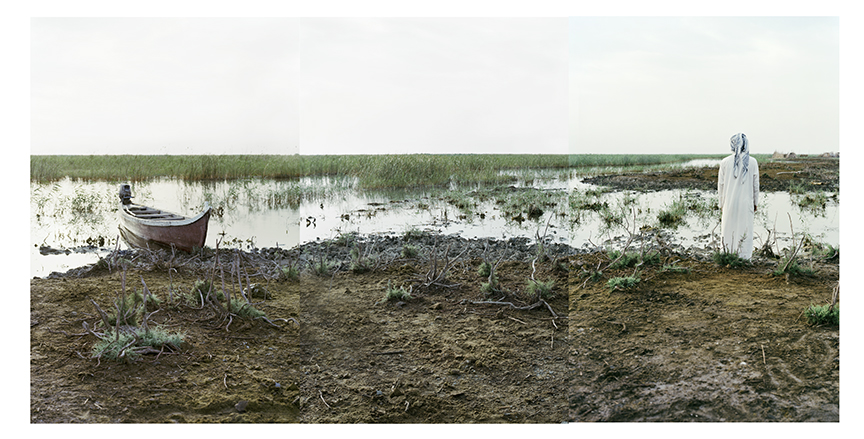
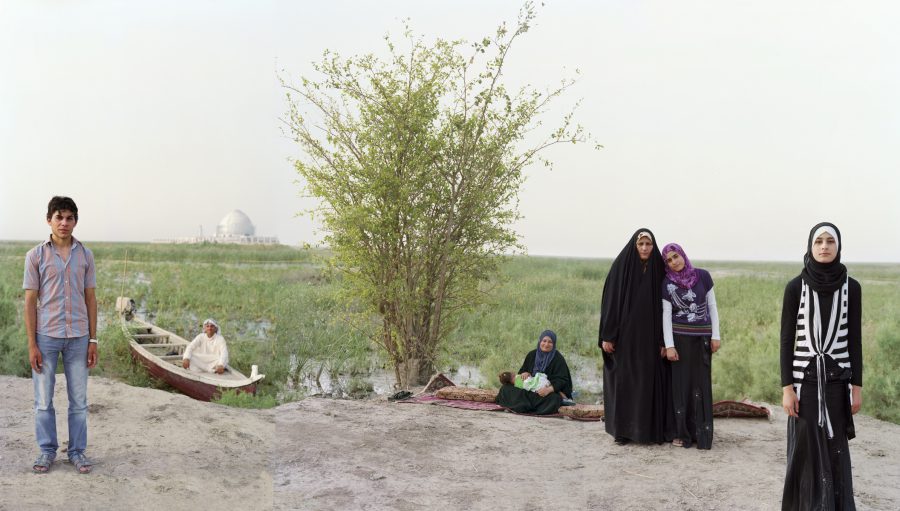
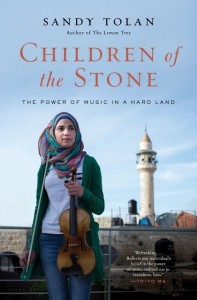
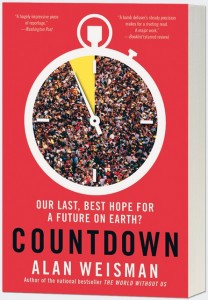

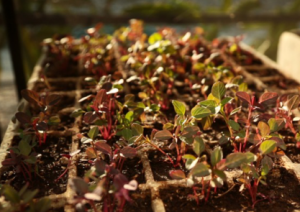

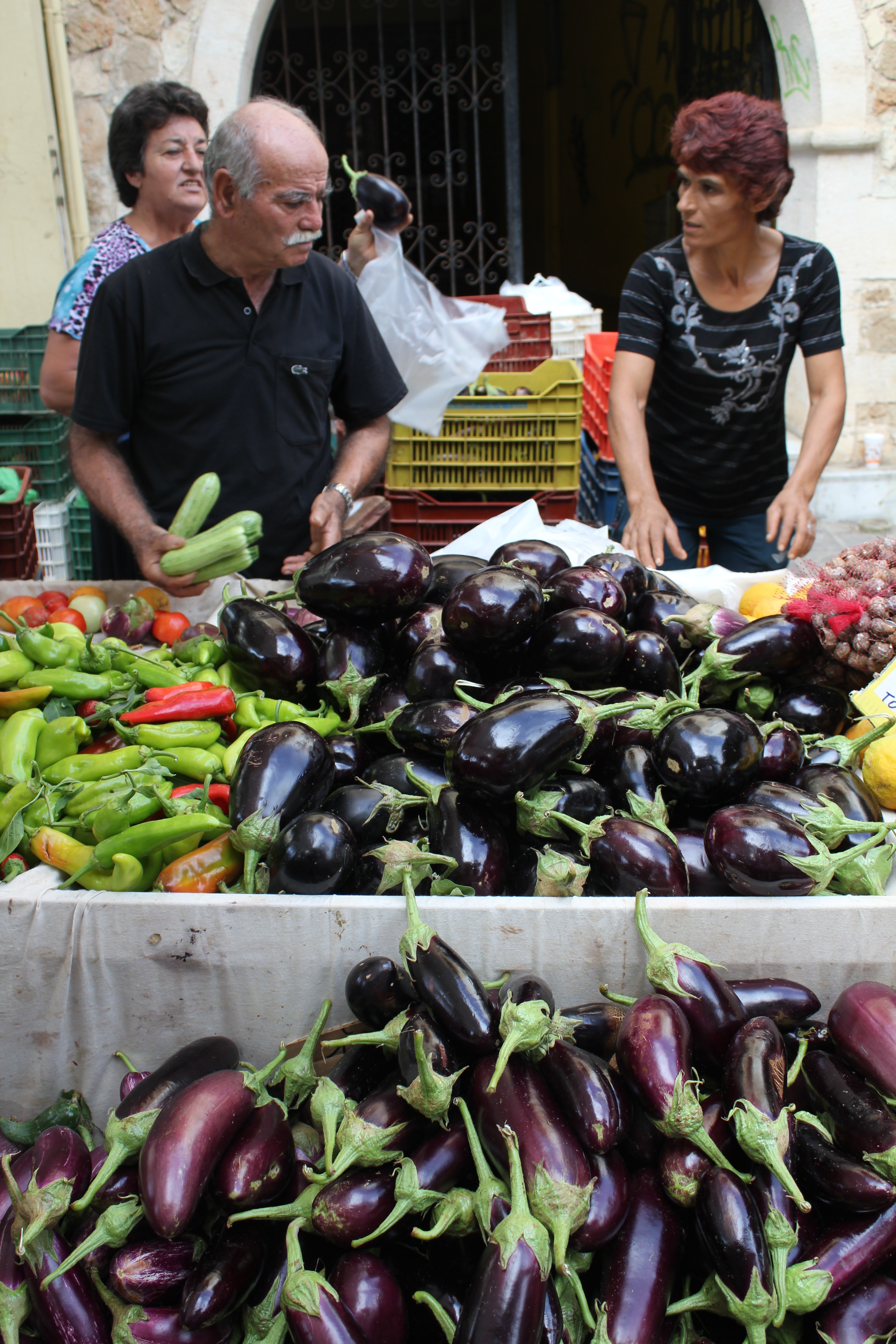

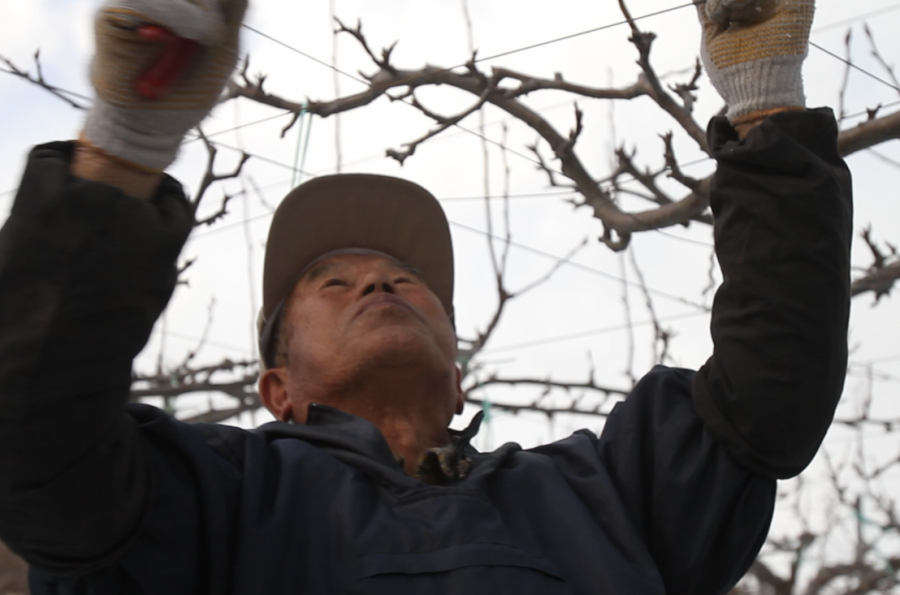
 As a performer with The Great Moscow State Circus, Svitlana Svystun spends ten months a year traveling from fairground to fairground around the United Kingdom. Her coworkers include a human cannonball, a crossbow artist, and a crew of Hungarian roustabouts.
As a performer with The Great Moscow State Circus, Svitlana Svystun spends ten months a year traveling from fairground to fairground around the United Kingdom. Her coworkers include a human cannonball, a crossbow artist, and a crew of Hungarian roustabouts. There’s a huge amount of human effort buried in almost everything around us. You just need to know where to look.
There’s a huge amount of human effort buried in almost everything around us. You just need to know where to look. Samanta moved to Baku, the capital of Azerbaijan, for the same reason that thousands of other foreigners did: the oil boom.
Samanta moved to Baku, the capital of Azerbaijan, for the same reason that thousands of other foreigners did: the oil boom.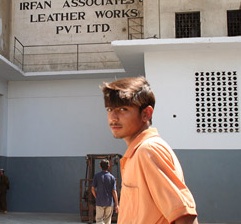 Mohmen left his village at 13 and quickly found work stacking animal skins in one of Karachi’s many tanneries. He wasn’t allowed to stand by the window when the fumes overtook him. Now, at 17, he’s still doing the same job.
Mohmen left his village at 13 and quickly found work stacking animal skins in one of Karachi’s many tanneries. He wasn’t allowed to stand by the window when the fumes overtook him. Now, at 17, he’s still doing the same job. Nigeria produces more movies per year than any other country but India and the United States. Since the 1990s, “Nollywood” videos have been an entertainment staple – and a source of pride – for Africans everywhere.
Nigeria produces more movies per year than any other country but India and the United States. Since the 1990s, “Nollywood” videos have been an entertainment staple – and a source of pride – for Africans everywhere.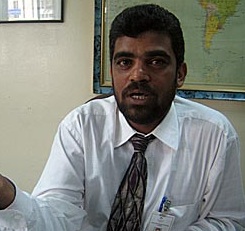 About one-fourth of the people who live in Saudi Arabia are foreign workers. Many come from Sunni Muslim countries such as Indonesia, Pakistan, or Bangladesh. But others are Christians, Buddhists, Hindus, and minority Shiites.
About one-fourth of the people who live in Saudi Arabia are foreign workers. Many come from Sunni Muslim countries such as Indonesia, Pakistan, or Bangladesh. But others are Christians, Buddhists, Hindus, and minority Shiites. Remember Hercules, the hero from Greek mythology? He’s famous for the twelve labors he was forced to perform by one of his rivals. One of the toughest was to get rid of 30 years worth of manure left by a herd of royal cattle.
Remember Hercules, the hero from Greek mythology? He’s famous for the twelve labors he was forced to perform by one of his rivals. One of the toughest was to get rid of 30 years worth of manure left by a herd of royal cattle. Walk into your local chain restaurant and you can get a lobster tail for around 15 bucks. Ever wonder where the lobster comes from, or why it’s so cheap?
Walk into your local chain restaurant and you can get a lobster tail for around 15 bucks. Ever wonder where the lobster comes from, or why it’s so cheap? Pam Pardy and Blair Ghent left good jobs in Toronto to return home to rural Newfoundland. They thought the quality of life would be better there for their son Brody.
Pam Pardy and Blair Ghent left good jobs in Toronto to return home to rural Newfoundland. They thought the quality of life would be better there for their son Brody. Diana Dimova says she’s never so moved as when she sings the ancient mountain music of her native Bulgaria. The music, distinguished by its haunting harmonies, was briefly popular in western Europe, and still enjoys a small but loyal audience.
Diana Dimova says she’s never so moved as when she sings the ancient mountain music of her native Bulgaria. The music, distinguished by its haunting harmonies, was briefly popular in western Europe, and still enjoys a small but loyal audience.
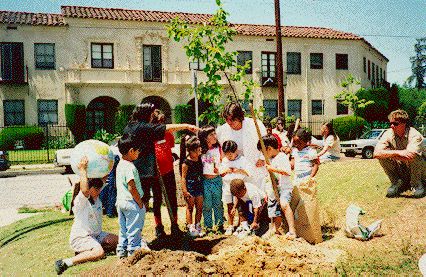 The term “ecovillage” evokes pastoral visions of earthen homes and glistening solar panels. But in cosmopolitan Los Angeles, the idea of ecological alternative living gets stretched to include an urban slum neighborhood and a Mexican-American barrio, complete with electric low-riders and solar-powered rap recording studios.
The term “ecovillage” evokes pastoral visions of earthen homes and glistening solar panels. But in cosmopolitan Los Angeles, the idea of ecological alternative living gets stretched to include an urban slum neighborhood and a Mexican-American barrio, complete with electric low-riders and solar-powered rap recording studios.